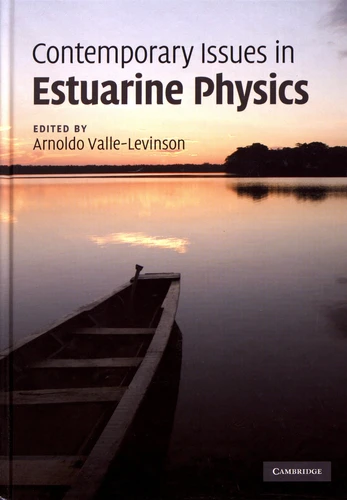Contemporary Issues in Estuarine Physics
Par :Formats :
- Paiement en ligne :
- Livraison à domicile ou en point Mondial Relay indisponible
- Retrait Click and Collect en magasin gratuit
- Réservation en ligne avec paiement en magasin :
- Indisponible pour réserver et payer en magasin
- Nombre de pages315
- PrésentationRelié
- FormatGrand Format
- Poids0.794 kg
- Dimensions17,3 cm × 24,6 cm × 2,0 cm
- ISBN978-0-521-89967-3
- EAN9780521899673
- Date de parution01/04/2010
- ÉditeurCambridge University Press
Résumé
Estuaries are areas of high socioeconomic importance with the majority of the largest cities in the world being located on river estuaries. Estuaries bring together fluxes of fresh and saline water, as well as fluvial and marine sediments, and contain many biological niches and high biological diversity. Increasing sophistication of field observation technology and numerical modeling have led to significant advances in our understanding of the physics of these systems over the last decade.
This book introduces a classification for estuaries before presenting the basic physics and hydrodynamics of estuarine circulation and the various factors that modify it in time and space. It then covers special topics at the forefront of research such as turbulence, fronts in estuaries and continental shelves, low inflow estuaries, and implications of estuarine transport for water quality. With contributions from some of the world's leading authorities on estuarine and lagoon hydrodynamics, this volume provides a concise foundation for academic researchers, advanced students, and coastal resource managers.
This book introduces a classification for estuaries before presenting the basic physics and hydrodynamics of estuarine circulation and the various factors that modify it in time and space. It then covers special topics at the forefront of research such as turbulence, fronts in estuaries and continental shelves, low inflow estuaries, and implications of estuarine transport for water quality. With contributions from some of the world's leading authorities on estuarine and lagoon hydrodynamics, this volume provides a concise foundation for academic researchers, advanced students, and coastal resource managers.
Estuaries are areas of high socioeconomic importance with the majority of the largest cities in the world being located on river estuaries. Estuaries bring together fluxes of fresh and saline water, as well as fluvial and marine sediments, and contain many biological niches and high biological diversity. Increasing sophistication of field observation technology and numerical modeling have led to significant advances in our understanding of the physics of these systems over the last decade.
This book introduces a classification for estuaries before presenting the basic physics and hydrodynamics of estuarine circulation and the various factors that modify it in time and space. It then covers special topics at the forefront of research such as turbulence, fronts in estuaries and continental shelves, low inflow estuaries, and implications of estuarine transport for water quality. With contributions from some of the world's leading authorities on estuarine and lagoon hydrodynamics, this volume provides a concise foundation for academic researchers, advanced students, and coastal resource managers.
This book introduces a classification for estuaries before presenting the basic physics and hydrodynamics of estuarine circulation and the various factors that modify it in time and space. It then covers special topics at the forefront of research such as turbulence, fronts in estuaries and continental shelves, low inflow estuaries, and implications of estuarine transport for water quality. With contributions from some of the world's leading authorities on estuarine and lagoon hydrodynamics, this volume provides a concise foundation for academic researchers, advanced students, and coastal resource managers.


